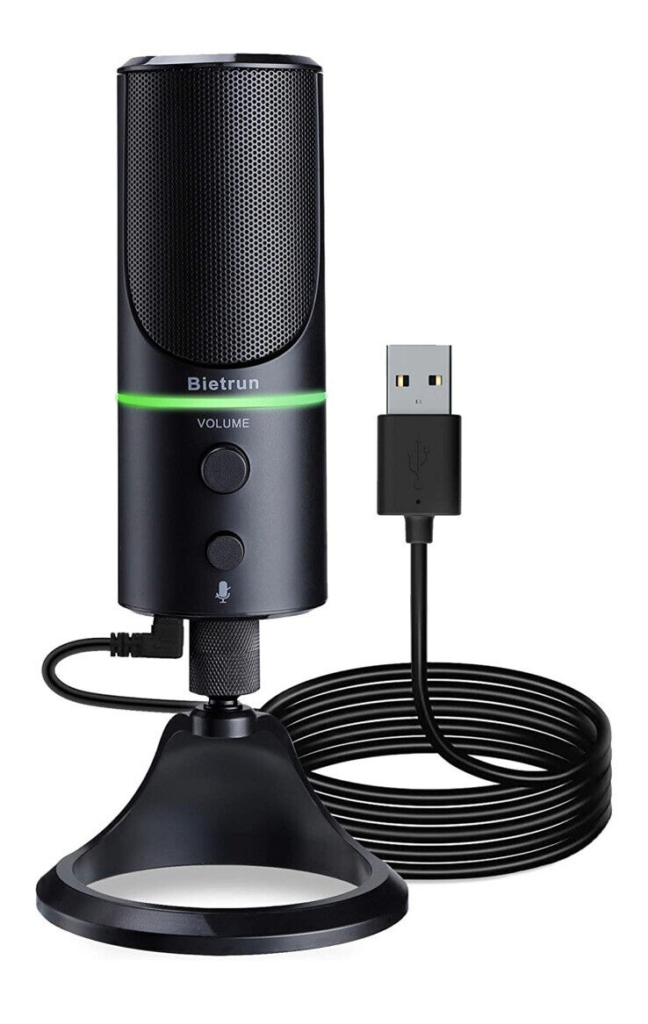The digital microphone has been around since the 1970s when Bell Labs engineers made the first digital audio recording systems. Analog-to-digital converters (ADCs) were used in these early systems to change analog audio signals into digital signals that could be stored on a computer or other digital medium.
In the 1980s and 1990s, the development of digital audio recording technology changed the music business by making it possible to record, edit, and distribute music in a digital format. This made it easier for musicians and audio engineers to make high-quality recordings by making more digital audio workstations (DAWs) and other digital audio software.
In the 2000s, digital microphones became more popular because they were more accurate and could be used in more ways than analog microphones. A digital-to-analog converter (DAC) is used in these microphones to turn sound waves into a digital signal that can be sent to a computer or other digital device to be processed and stored.
Digital microphones are used for many things today, such as recording music, podcasting, and streaming. They are usually more accurate and sensitive than analog microphones, but they may be more expensive and require more advanced software and hardware.

What is a digital microphone?
Digital microphones move the function of converting analog to digital from the codec to the microphone itself. This makes it possible for the microphone to send only digital data to the processor. Digital MEMS microphones are often used where interference could mess up analog audio signals.
How Digital Microphones Work
Explanation of the Analog-to-Digital Conversion Process
Analog Signal Reception
1. Digital microphones capture sound waves as analog signals through a diaphragm and transducer mechanism.
2. Analog signals are continuous and vary in amplitude, corresponding to the changes in sound pressure.
Analog-to-Digital Conversion (ADC)
1. ADC is the process of converting analog signals into digital data.
2. An analog microphone’s voltage levels are sampled at discrete intervals.
3. The continuous analog waveform is quantized into a series of digital values representing discrete points on the waveform.
4. The digital values are then transmitted or processed further in digital form.
Role of Digital Signal Processors (DSP) in Digital Microphones
Filtering and Noise Reduction
1. DSPs process digital signals to filter out unwanted noise and interference.
2. Algorithms are applied to eliminate background noise, providing cleaner audio output.
Beamforming and Directionality
1. DSPs enable advanced techniques like beamforming, allowing the microphone to focus on specific sound sources.
2. Directional microphones can suppress unwanted sounds from the sides and back, enhancing the desired sound quality.
Equalization and Signal Enhancement
1. DSPs can adjust the microphone’s frequency response, enhancing specific ranges of audio frequencies.
2. Equalization algorithms can balance the audio, clearly representing different sound frequencies.
Customization and User Settings
1. Some digital microphones feature user-adjustable settings through DSP, allowing users to modify audio parameters such as gain, tone, and effects.
2. Customizable DSP settings cater to various recording environments and user preferences.
Comparison with Traditional Analog Microphones
Noise Resistance
1. Digital microphones, with their DSP capabilities, offer superior noise resistance and can eliminate unwanted background noise during the digital processing stage.
2. Analog microphones are more susceptible to interference and may require additional noise reduction in post-processing.
Flexibility and Adaptability
1. Digital microphones are highly adaptable due to their programmable nature. Manufacturers can update and enhance microphone features through firmware updates.
2. Analog microphones have fixed characteristics and cannot be easily modified or upgraded without physical alterations.
Compatibility and Connectivity
1. Digital microphones often use standard digital interfaces like USB, making them compatible with various devices such as computers, smartphones, and tablets.
2. Analog microphones require compatible analog input ports and may need adapters to connect to digital devices, reducing their versatility.
Signal Integrity
1. Digital microphones maintain signal integrity throughout the recording and processing chain, minimizing signal degradation.
2. Analog microphones may experience signal loss and quality degradation over long cable runs or due to environmental factors.
Understanding these aspects provides insight into digital microphones’ advantages over their analog counterparts, making them a popular choice in various professional and consumer audio applications.
Advantages of Digital Microphones
Higher Signal-to-Noise Ratio:
Digital microphones have advanced technologies that significantly enhance their signal-to-noise ratio (SNR). SNR is a crucial metric measuring the balance of the desired audio signal and background noise. In digital microphones, this translates to an ability to capture and transmit audio with exceptional clarity, even in environments with high levels of ambient noise. By employing sophisticated digital signal processing techniques, these microphones effectively suppress unwanted noise, ensuring that the recorded audio maintains fidelity and remains distortions-free. This high SNR capability makes digital microphones ideal for professional audio recording where pristine sound quality is paramount.
Flexibility in Signal Processing and Customization:
One of the standout features of digital microphones lies in their unparalleled flexibility in signal processing and customization. Unlike their analog counterparts, digital microphones incorporate powerful digital signal processors (DSP), allowing real-time adjustments and enhancements. Users can modify various parameters such as gain, equalization settings, and the application of audio effects directly within the microphone. This capability empowers content creators, musicians, and audio professionals to fine-tune their recordings on the fly, adapting to different environments and artistic requirements. Customizing the microphone’s characteristics in real-time dramatically enhances the creative possibilities and ensures optimal audio quality tailored to specific needs.
Compatibility with Digital Devices and Interfaces:
Digital microphones offer seamless compatibility with various digital devices and interfaces, making them versatile in diverse applications. These microphones often feature universal digital interfaces such as USB, Thunderbolt, or Lightning connectors, allowing direct plug-and-play functionality with computers, smartphones, tablets, and other digital devices. This universal compatibility simplifies the setup process and eliminates the need for additional adapters or specialized connectors. Furthermore, digital microphones integrate seamlessly with digital audio workstations (DAWs) and recording software applications. This integration enhances the workflow for musicians, podcasters, and content creators, enabling effortless recording, editing, and sharing high-quality audio content.
Types of Digital Microphones
USB Microphones for Computer Use:
USB microphones are a popular type of digital microphone explicitly designed for easy computer integration. These microphones have a built-in analog-to-digital converter and connect directly to a computer’s USB port. USB microphones are highly convenient and do not require additional audio interfaces or complicated setups. They are widely used for podcasting, online streaming, voiceovers, and video conferencing. Their plug-and-play functionality and compatibility with various operating systems make them a favorite choice among beginners and content creators seeking simplicity and affordability in their setups.
Digital Microphones for Smartphones and Tablets:
Digital microphones tailored for smartphones and tablets offer professional-grade audio recording capabilities on mobile devices. These microphones typically connect via the device’s charging port or headphone jack. With the increasing demand for high-quality audio content creation on mobile platforms, these microphones enable users to capture studio-quality audio on the go. They find applications in mobile journalism, field recording, vlogging, and live streaming. Compact and portable, these microphones cater to content creators and journalists who require mobility without compromising audio quality.
High-End Digital Microphones for Professional Recording Studios:
High-end digital microphones are engineered for professional recording studios and critical audio applications. These microphones deliver exceptional audio quality, precisely capturing nuances and details. They often feature advanced diaphragm designs, superior analog-to-digital converters, and specialized components that result in unparalleled sound reproduction. High-end digital microphones are commonly used in music production, film soundtracks, voiceover work for movies and games, and other high-profile audio recording tasks. These microphones provide accuracy and clarity, which are essential for demanding studio environments where uncompromising sound quality is imperative.
Considerations for Choosing a Digital Microphone
Factors like Sensitivity, Frequency Response, and Polar Patterns:
When choosing a digital microphone, it’s crucial to consider factors such as sensitivity, frequency response, and polar patterns. Sensitivity indicates how well the microphone converts sound pressure into an electrical signal. A higher-sensible microphone can capture softer sounds, making it suitable for detailed recordings. Frequency response defines the range of frequencies the microphone can reproduce. For example, microphones with a flat frequency response accurately capture all frequencies, while others might emphasize certain ranges, ideal for specific applications like vocals or instruments. Polar patterns determine the microphone’s sensitivity to sound from different directions. Standard practices include cardioid (frontal sensitivity, ideal for solo recordings), omnidirectional (captures sound from all orders), and bidirectional (captures sound from front and back). Choosing the right combination of sensitivity, frequency response, and polar pattern ensures the microphone suits the intended recording environment and source.
Compatibility with Recording Equipment and Software:
Another essential consideration is the microphone’s compatibility with existing recording equipment and software. Digital microphones often use USB or other digital interfaces, making them compatible with computers, smartphones, and tablets. However, ensuring compatibility with specific operating systems and recording software is essential. Some microphones come bundled with proprietary software, offering additional features and customization options. Compatibility with audio interfaces and mixers is vital for professional setups, ensuring seamless integration into existing studio configurations. Additionally, it is essential for uninterrupted operation to consider the microphone’s power requirements (some microphones draw power from the device they’re connected to, while others require external power sources).
Budget Considerations for Different Types of Users:
Budget considerations play a significant role in choosing a digital microphone. USB microphones are often more affordable and cater to beginners and casual content creators. They offer a cost-effective solution with decent audio quality for more advanced users, such as podcasters, musicians, and professional studios. Mid-range digital microphones balance performance and cost. High-end digital microphones, while more expensive, deliver exceptional audio quality and advanced features, making them suitable for critical audio recording tasks in professional environments. It’s crucial to evaluate the microphone’s features, performance, and long-term benefits concerning the available budget, ensuring that the chosen microphone provides the best value for the investment.
Considering these factors — sensitivity, frequency response, polar patterns, compatibility with equipment and software, and budget constraints — enables users to make informed decisions when selecting a digital microphone tailored to their specific needs and preferences.
Features of a Digital Microphone
Here are some other things that a digital microphone can do:
- Digital-to-analog converter (DAC): A DAC is used by a digital microphone to turn sound waves into a digital signal. This signal can then be sent to a computer or digital device to be processed and stored.
- Audio output: USB, Thunderbolt, or Ethernet can get audio out of a digital microphone. With these outputs, the microphone can be connected to a computer or digital device for processing and storage.
- Polar patterns: Digital microphones can have different polar patterns, which affect how they are pointed. Polar patterns like figure-eight, cardioid, and omnidirectional are common.
- Frequency response: The range of frequencies that a digital microphone can accurately reproduce is called its frequency response. Most digital microphones can pick up sounds from 20 Hz to 20 kHz, the full range of sounds people can hear.
- Sensitivity: A digital microphone’s sensitivity is how well it can pick up very quiet sounds. Most digital microphones have a sensitivity between -40 dB and -60 dB, which means they can pick up sounds as soft as a whisper.
- Impedance: A digital microphone’s impedance is how hard it is for an electric current to flow through it. Most digital microphones have a low impedance, making it easy to connect them to various audio devices.
- Digital processing: Some digital microphones have digital processing options like noise reduction, equalization, and compression that can help improve the sound quality of the final recording.



